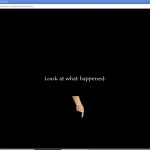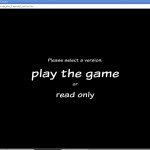I only wish I had Inanimate Alice when I taught remedial reading in a public high school just a few years ago. I can imagine my students—a wide mix of cultures, races, social statuses, and reading abilities—shouting at the scenes displayed on the Promethean Board: “Click where that hand appeared!” “What do those boxes on the right do?” “Check out her pad first!” “Move the mouse somewhere else!” “Play the game; play the game!”—to move the story along.
On their website the creators, Kate Pullinger and Chris Joseph, state that the purpose of the “transmedia project” was originally for entertainment; however, the site clearly markets to educators with a section called “Teach with Alice” and descriptions such as “A reading-from-the-screen experience for the ‘always on’ generation.” They also throw this piece into the fire of the literature-in-the-curriculum debate by asserting “new media demands new literacies.” Thus, I suspect that teachers saw the learning-potential in Inanimate Alice because of its transcendence across nationalities and media types and used it in their classrooms before it was promoted as such. It is probable that once Inanimate Alice found its niche in the world, the creators took that idea and simply showed people.
Digging deeper down the rabbit hole, I can hear teachers making their case that “Inanimate Alice is the future of literature”—for the title itself conjures a character from an old, canonical text, Alice in Wonderland. Both Alices are the about the same age, are inquisitive and imaginative; yet, the modern Alice is older (and ages throughout the series); travels to actual versus seemingly imaginary places; and tries to interpret/engage in her world using a digital device instead of a book. Therefore, it represents the shift in way childhood is perceived and lived.






I want to look at Inanimate Alice more closely later this semester, so I’m glad you already put it on our radar screens!